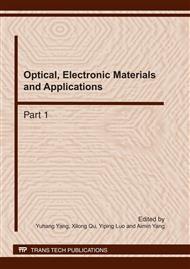p.600
p.605
p.609
p.613
p.617
p.621
p.625
p.630
p.635
Mobile Wireless Sensor Networks K-Covering Algorithm
Abstract:
In mobile wireless sensor networks, sensor nodes may due to their own moves, energy loss, physical damage, errors and failures or other factors, will result the case of coverage holes, and then lead to inefficient network coverage. This paper designed a new algorithm based on clustering approach for mobile wireless sensor network, can monitor the network in real-time and repairing coverage holes quickly. Simulation results show that, the algorithm used in mobile wireless sensor network not only can achieve the desired uniformity of coverage, but also increase the coverage area, and better performance than the Virtual force algorithm(VFA) [1].
Info:
Periodical:
Pages:
617-620
Citation:
Online since:
March 2011
Authors:
Keywords:
Price:
Сopyright:
© 2011 Trans Tech Publications Ltd. All Rights Reserved
Share:
Citation:


